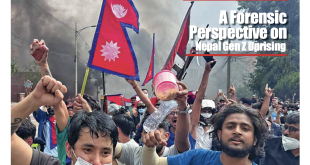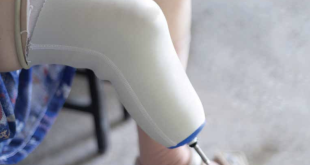
Medical education is one of the most competitive and demanding professions. It was only after the dawn of democracy in 1950 that the Department of Health Service was established in Nepal (1). During the past 70 years, more hospital and academic centers for health services have come up in different parts of Nepal. After the formation of the new education system plan in 1972, the Institute of Medicine was established under Tribhuvan University, which has been a cornerstone for medical education in Nepal. The journey of providing healthcare and reforming medical education started with the first batch of 22 doctors graduating in 1984.
As of 2019/2020 there are 26,346 MBBS doctors, 7,758 specialist doctors, 90,909 nurses, and 116,000 and more health professionals serving the nation of more than 30 million. The ratio of doctors to patients is improving, but is still not good enough. Reports say that the rural areas of Nepal have one doctor for every 150,000 people, compared to one for every 850 in the Kathmandu valley (3). This undoubtedly has brought chaos in providing quality healthcare service to the nation. This can be solved by adequate mobilization of healthcare practitioners and health institutions all around the country, rather being focused in one certain region.
Nepal has gone through various revolutionary changes. The newly formed constitution of 2015 assures Right to Healthcare (Article 35) and Right to Education (Article 31), which if achieved in reality, would make Nepal one of the healthy, developed nations. Health is an important determinant for a country to achieve development. People in the country should be physically, mentally, and emotionally sound, then only can the country reform socially and economically.
Medical education has changed, and will continue to change, in response to scientific advances and societal needs (2). Medical education of Nepal has gained a remarkable reputation on the world stage due to high educational standards, with advanced and sophisticated teaching methods and scientific approach. MBBS degree in Nepal is conducted in the English language, as it is one of the most widely spoken languages in the world. The fact is that, over the course of the last 42 years since the start of MBBS studies, Nepal has achieved significant success in the field of medical education, but still not enough.
One research published by WHO in 2013, regarding human resources for health to achieve universal health coverage, states, “The global snapshot was created in comparison to three density thresholds of skilled health professionals—22.8 midwives, 34.5 nurses, and 59.4 physicians per 10,000 population are required on the basis of pattern of the health workforce availability globally”. To meet these requirements by 2035, Nepal requires a 351% increase to meet the 22.8/10,000 threshold of midwives, 582% increase to meet the 34.5/10,000 threshold of nurses, and a 1075% increase to meet the 59.4/10 000 threshold of physicians (4). This report definitely highlights the requirement of more health resources—doctors, nurses, and allied health professionals—to meet the health demand. With privatization of medical colleges, the medical education industry is booming and providing the best medical professionals and healthcare. But, there are also adverse effects due to the unhealthy competition, which has a negative effect on the quality of medical graduates, and so, tremendous improvement is required. The message is clear that there is ambiguity out there. Proper regulation and establishment of health institutions should be done unequivocally all around the country. We shouldn’t overlook the fact that government hospitals are inadequate, and private teaching institutions have played an immense role in providing healthcare services to the people of Nepal at affordable costs (5). There are 21 medical colleges, 15 dental colleges, and hundreds of nursing colleges and CTEVT-affiliated technical schools, colleges, and training centers from where skilled human resource graduate.
Medical education should be compatible with the healthcare system and meet the dynamic needs of the community. Quality assurance of medical and health personnel education is important to ensure quality healthcare system in the country. With advancement of communication and transportation, doctors are an international commodity now. The idea of being global health citizens is growing, and the mindset of trying to fit optimally in a better environment makes medical graduates migrate to foreign nations for better post graduate courses, pay, facilities, and social security. We should think out-of-the-box and produce medical graduates who address medical care inside the country. To prevent migration, decentralization of health institutions is essential. Promoting students from the rural region and giving opportunity to allied health care professionals to pursue their career as medical doctors would result in developing valuable assets to the country.
There are multiple factors that drive students to go abroad and purse their medical degrees. Many go abroad to get a medical degree, while many foreigners come to get a Nepalese degree. Whatever the reason may be, there should be scientific method of student selection. Health workforce should be competent and empathetic, since patients and their families rely on our education and experience when they are most vulnerable. Medically qualified teachers should participate in the teaching of the basic sciences, which enforces the basic concepts and highlights the relevance of the basic sciences to later clinical practice. Nepal’s laws relevant to physicians should be encompassed in the curriculum of medical education in Nepal, which will minimize malpractice in medicine and will assure quality healthcare.
A clinical teaching setting should be developed requiring medical students to adopt evidence-based medicine through problem-based learnings, case discussions, community work, clinical research, and patient communication and counseling throughout the curriculum. It should go hand-in-hand with the community, which will make them realize the problems on the ground, and encourage them to stay in the country. Infrastructure should be well-developed and scientific research laboratories should be promoted, bringing in new ideas, techniques, and technology, which are still lacking in Nepal. All diversities of health education should be mastered. Various councils and universities should work collaboratively and form fully-funded bodies, where an independent regulating organization can address all these health issues, organize resources, review quality assurance, give accreditation, and meet the international standards. On achieving this, Nepal will be a better destination for medical tourism, providing both excellent medical education and quality healthcare to the international community.
While our healthcare system produces master degrees and specialists in different fields, this same system mostly looks for certificate and diploma-level nurses and allied health professionals. The mindset that they represent the workforce that will get the work done, while not financially burdening the institutions, has led to imbalance, and the question arises whether the quality of services expected can be ensured by the same institutions with only entry-level healthcare professionals from allied professions. So, emphasis should be given to the training of higher levels of all healthcare professionals. Ties should be made with foreign countries to upgrade the existing facilities and allied healthcare streams, which are the backbone and will help uplift the standard in our developing country (6).
The government should be encouraged to adopt a quality assurance process in medical education. This promotes public confidence that the quality and standards of medical degree and medical institution in the region are being safeguarded and enhanced. The trick to solve any kind of problem is to dig down and find the real source of the problem and solve it meticulously. We should not undermine the facts stated by the Kedar Bhakta Mathema Commission report in 2015, and Govinda KC’s fast-unto-death 17 times for reforming of medical education in Nepal, and follow the Medical Education Act in letter and spirit. Medicine is not one man’s game; it is teamwork that will make the medical fraternity and healthcare flourish. There should be a system of check and balance, so everyone will be competent enough in their field, which can only be achieved if all specialties grow equally and provide universal health coverage.
 Medicosnext
Medicosnext




